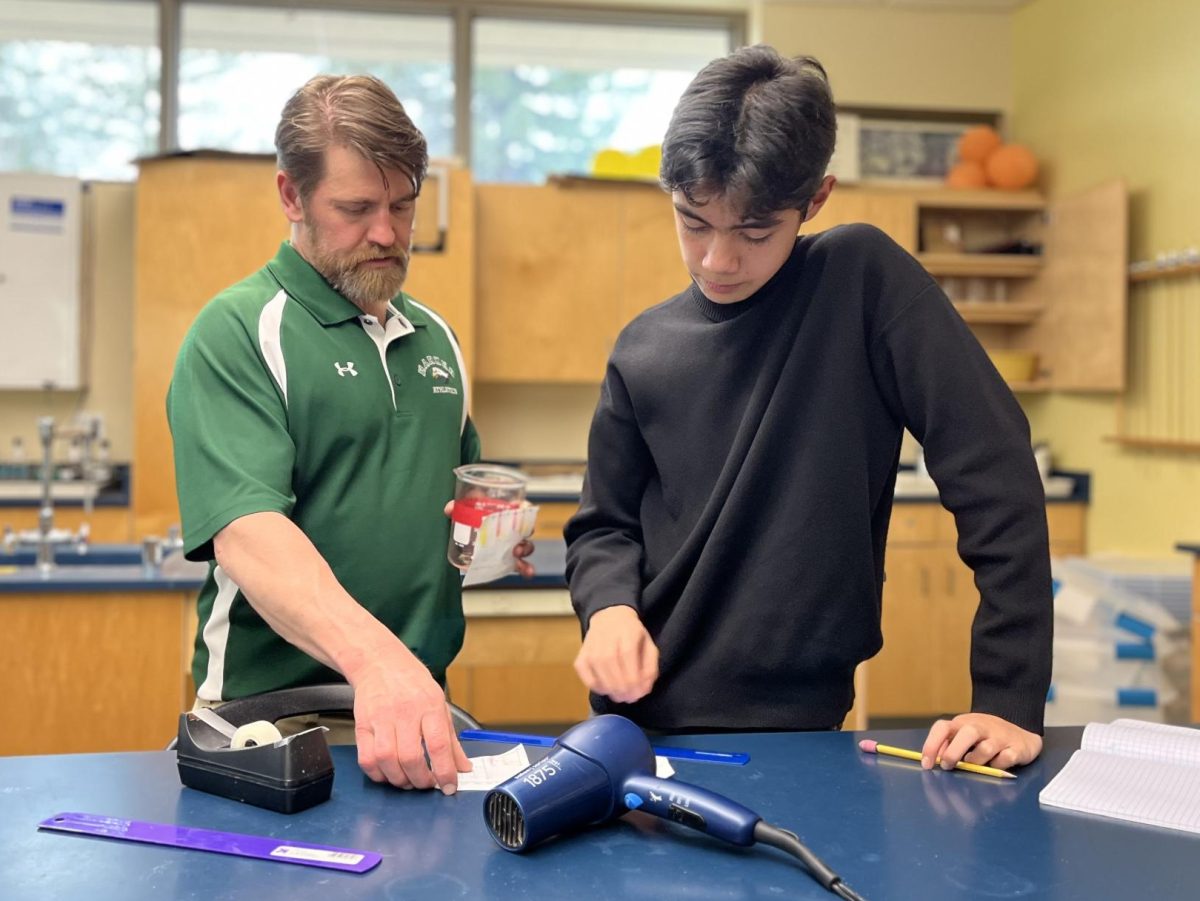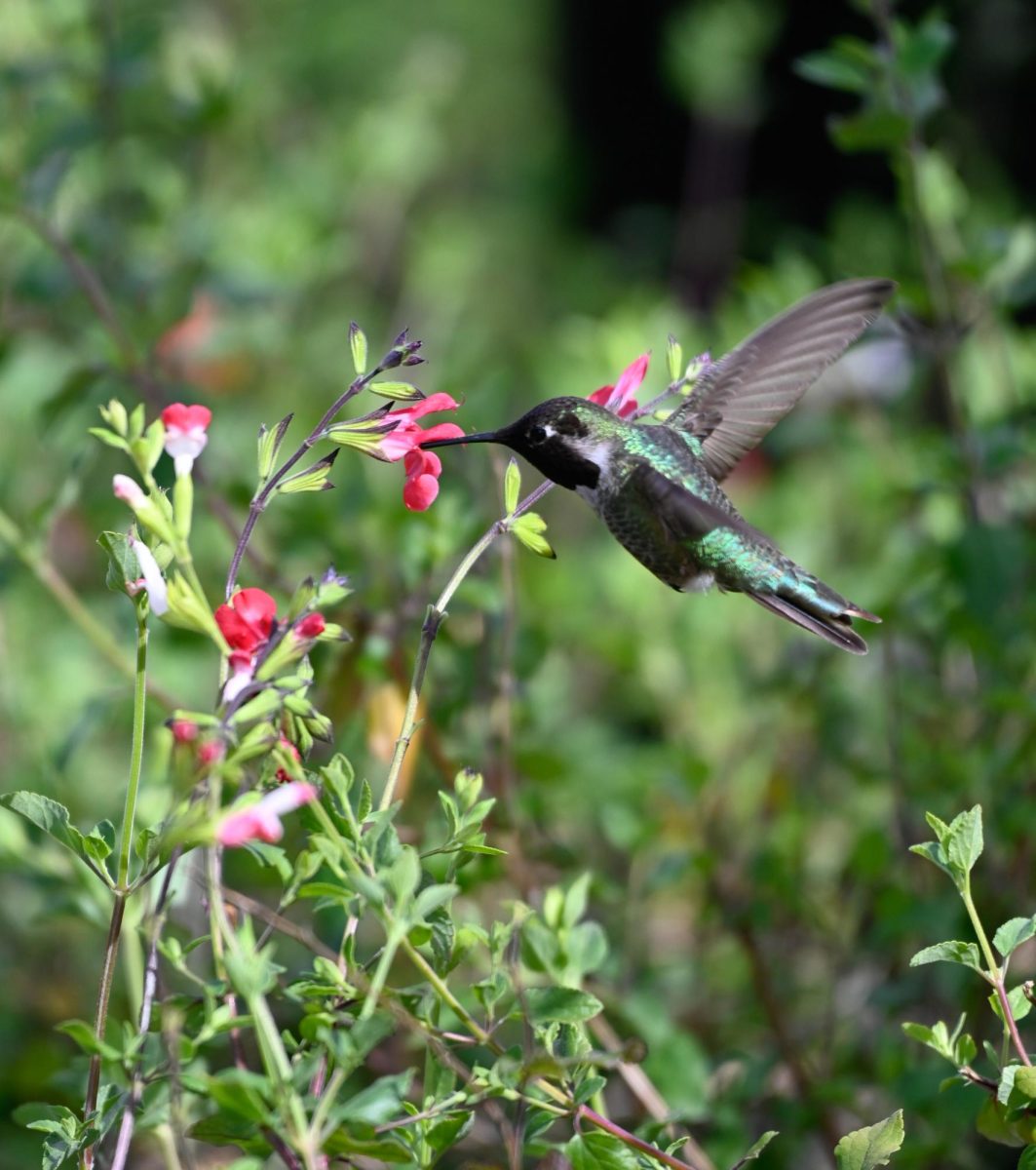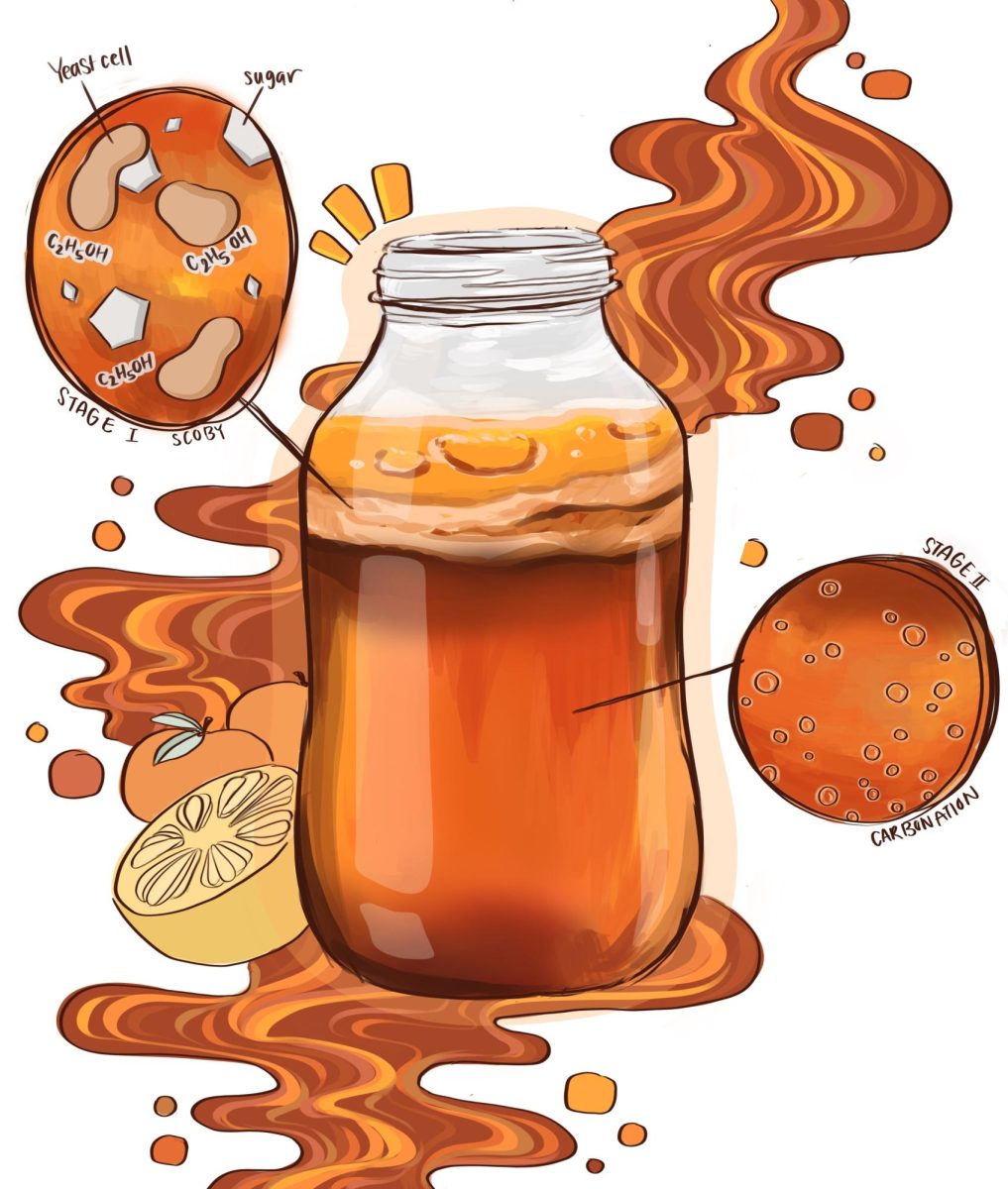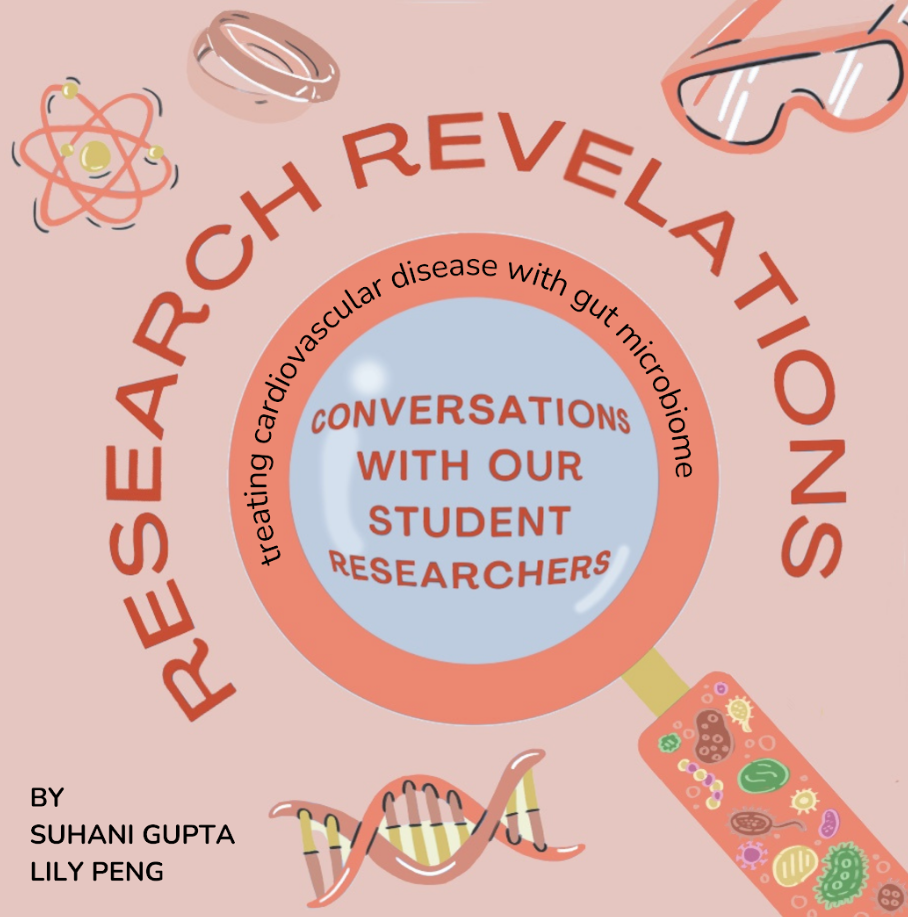Honors Chemistry students conducted a paper chromatography lab using colored dye from M&Ms to determine which flavors contained the synthetic food dye Tartrazine, also known as “Yellow #5,” over the course of two class periods ending on Feb. 27.
Students first labeled a sheet of Whatman paper, a type of filter paper, with six M&M colors: yellow, orange, red, green, brown and blue, as well as Yellow #5. They rubbed toothpicks dipped in distilled water on the shell of the M&Ms to remove the colored dye, which they then dotted onto the paper.
After the dots dried, students folded the paper into a cylindrical shape and developed their chromatograph in a 1% NaCl solution. As the solvent traveled up the paper, the colors in the dye separated, showing that brown dye contained red, orange, yellow and blue, while green dye had blue and yellow hues.
Students divided the distance the dyes traveled by how far the solvent traveled to find a retention factor called the Rf value of each color. In order to identify which flavors contained Tartrazine, they compared each of the dyes’ Rf values to Yellow #5’s Rf value of 0.54.
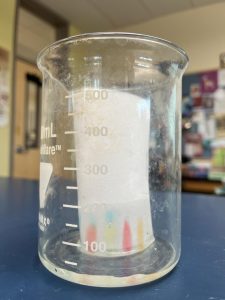
Following the lab, students wrote a lab report and discussed their results. Most students found that the yellow, green and brown flavors contained Yellow #5, as they all had yellow dye with similar Rf values as Yellow #5. Honors Chemistry student Audrey Dagum (10) enjoyed how the lab was both interactive and educational.
“[The lab] was really creative, and I felt like it was very hands-on,” Audrey said. “We got to play with colors, and it almost took me back to elementary school arts and crafts while also being informational and related to chemistry.”
The paper chromatography lab not only aligns with Honors Chemistry’s current unit on intermolecular forces but also involves real-world applications. Through learning about the broader uses of chromatography in everyday life, students gained insights into the importance of chemistry in various fields.
“I want my students to know that chromatology exists and can be used in analytical, forensic and even medical situations,” upper school Honors Chemistry teacher Andrew Irvine said. “I also liked that we talked about food coloring and the origin of food coloring, especially because red dye [No. 3] was managed by the state of California.”


















![“[Building nerf blasters] became this outlet of creativity for me that hasn't been matched by anything else. The process [of] making a build complete to your desire is such a painstakingly difficult process, but I've had to learn from [the skills needed from] soldering to proper painting. There's so many different options for everything, if you think about it, it exists. The best part is [that] if it doesn't exist, you can build it yourself," Ishaan Parate said.](https://harkeraquila.com/wp-content/uploads/2022/08/DSC_8149-900x604.jpg)




![“When I came into high school, I was ready to be a follower. But DECA was a game changer for me. It helped me overcome my fear of public speaking, and it's played such a major role in who I've become today. To be able to successfully lead a chapter of 150 students, an officer team and be one of the upperclassmen I once really admired is something I'm [really] proud of,” Anvitha Tummala ('21) said.](https://harkeraquila.com/wp-content/uploads/2021/07/Screen-Shot-2021-07-25-at-9.50.05-AM-900x594.png)







![“I think getting up in the morning and having a sense of purpose [is exciting]. I think without a certain amount of drive, life is kind of obsolete and mundane, and I think having that every single day is what makes each day unique and kind of makes life exciting,” Neymika Jain (12) said.](https://harkeraquila.com/wp-content/uploads/2017/06/Screen-Shot-2017-06-03-at-4.54.16-PM.png)








![“My slogan is ‘slow feet, don’t eat, and I’m hungry.’ You need to run fast to get where you are–you aren't going to get those championships if you aren't fast,” Angel Cervantes (12) said. “I want to do well in school on my tests and in track and win championships for my team. I live by that, [and] I can do that anywhere: in the classroom or on the field.”](https://harkeraquila.com/wp-content/uploads/2018/06/DSC5146-900x601.jpg)
![“[Volleyball has] taught me how to fall correctly, and another thing it taught is that you don’t have to be the best at something to be good at it. If you just hit the ball in a smart way, then it still scores points and you’re good at it. You could be a background player and still make a much bigger impact on the team than you would think,” Anya Gert (’20) said.](https://harkeraquila.com/wp-content/uploads/2020/06/AnnaGert_JinTuan_HoHPhotoEdited-600x900.jpeg)

![“I'm not nearly there yet, but [my confidence has] definitely been getting better since I was pretty shy and timid coming into Harker my freshman year. I know that there's a lot of people that are really confident in what they do, and I really admire them. Everyone's so driven and that has really pushed me to kind of try to find my own place in high school and be more confident,” Alyssa Huang (’20) said.](https://harkeraquila.com/wp-content/uploads/2020/06/AlyssaHuang_EmilyChen_HoHPhoto-900x749.jpeg)



